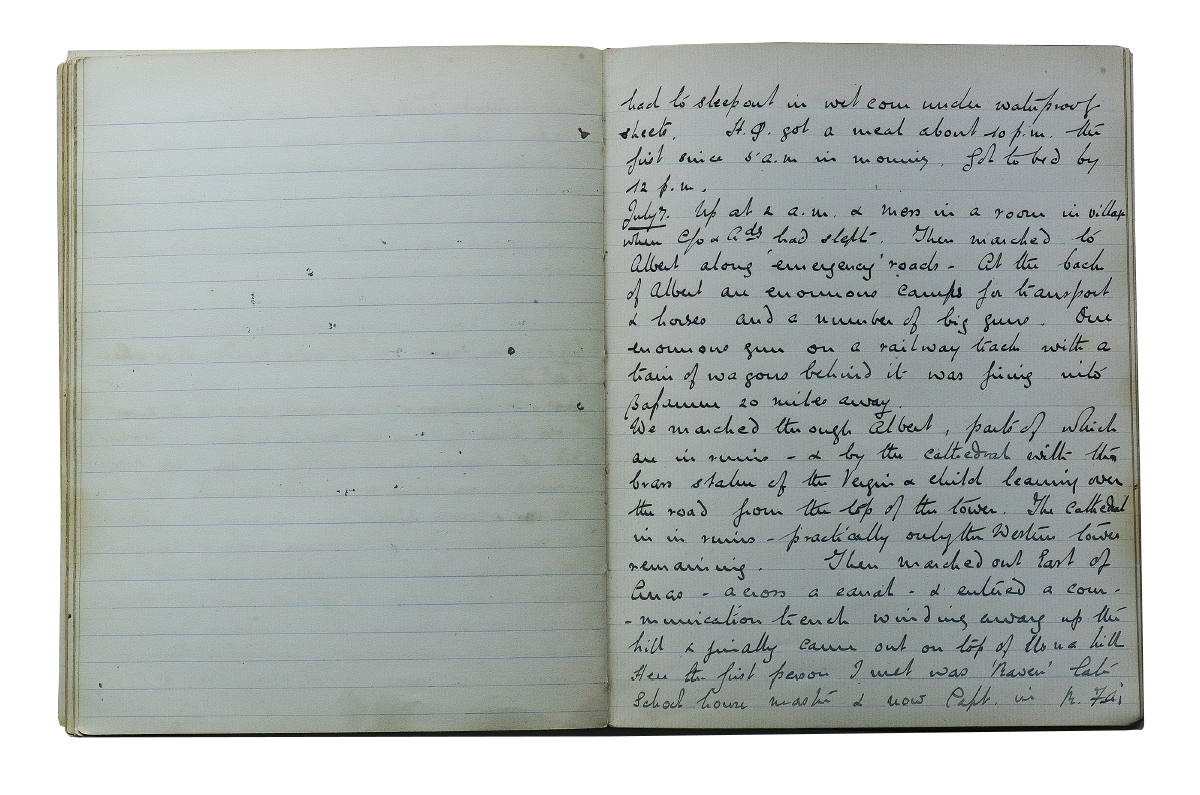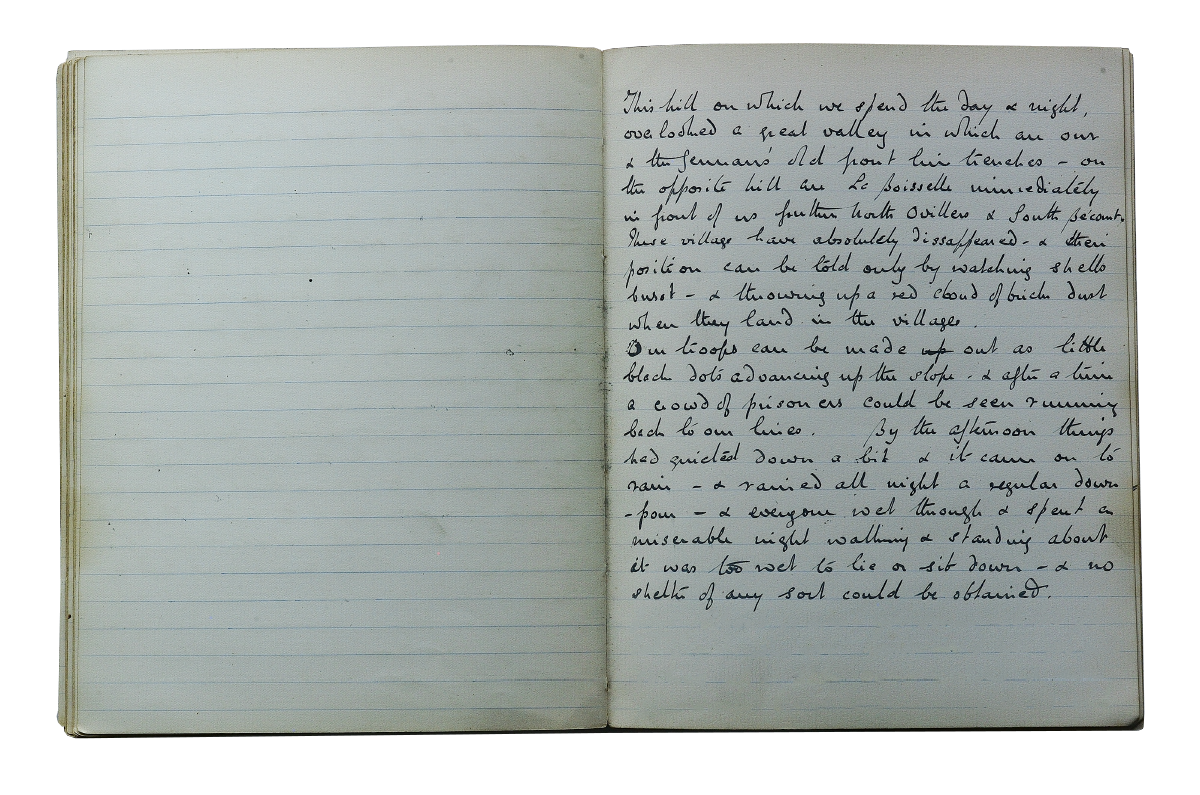July 7, 1916

July 7, 1916
July 7. Up at 2 a.m. and mess in a room in village where C/o and Adj. had slept. Then marched to Albert along ‘emergency’ roads. At the back of Albert are enormous camps for transport and horses and a number of big guns. One enormous gun on a railway track with a train of wagons behind it was firing into Bapaume 20 miles away.
We marched through Albert, parts of which are in ruins – and by the cathedral with the brass statue of the Virgin and Child leaning over the road from the top of the tower. The cathedral is in ruins – practically only the western tower remaining. Then marched out east of [Albert] – across a canal – and entered a communition trench winding away up the hill and finally came out on top of Usna Hill. Here the first person I met was ‘Raven’ later School house master and now Capt. in R.F.A.
This hill on which we spend the day and night, overlooked a great valley in which are our and the German’s old front line trenches. On the opposite hill are La Boiselle immediately in front of us, further north Ovillers and south Becourt. These villages have absolutely disappeared and their position can be told only by watching shells burst and throwing up a red cloud of brick dust when they land in the villages.
Our troops can be made out as little black dots advancing up the slope and after a time a crowd of prisoners could be seen running back to our lines. By the afternoon things had quietened down a bit and it came on to rain, and rained all night a regular downpour – everyone wet through and spent a miserable night walking and standing about it was too wet to lie or sit down and no shelter of any sort could be obtained.
[Adj. – Adjutant]
[‘Raven’ – Capt. Raven, Royal Field Artillery, was known to Arthur from Emmanuel College, University of Cambridge 1899, and later at Oundle School where both worked]
Image Credits
Imperial War Museum


